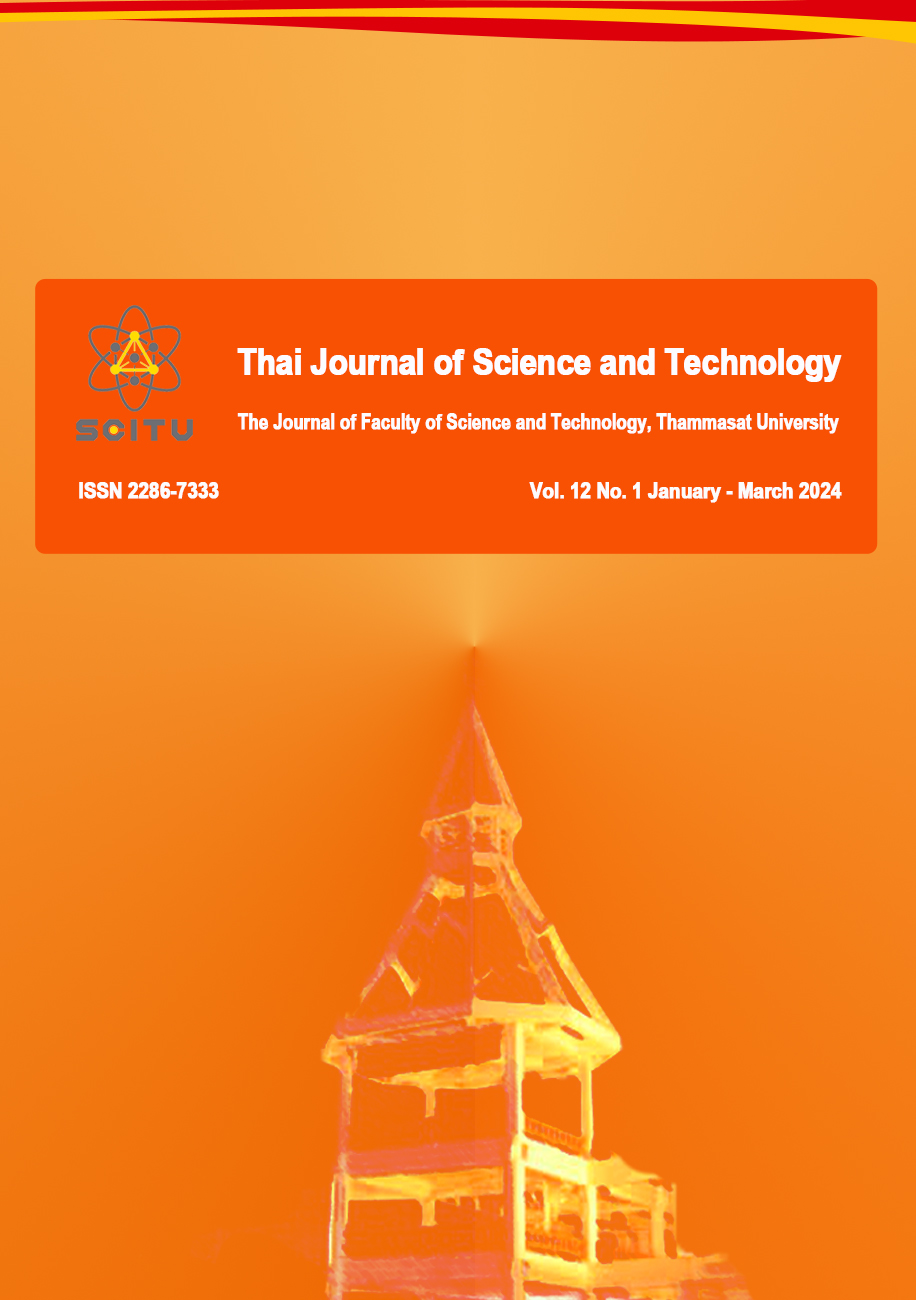Genetic Relationship Assessment of Vanda Using HAT-RAPD Technique
Main Article Content
Abstract
The Vanda is the second most important commercial orchid after the Dendrobium. There are many species and hybrids, making it difficult to classify by morphology and easily confused. High annealing temperature-random amplified polymorphic DNA (HAT-RAPD) technique was used to identify 12 samples of Vanda. The total 72 random primer were screened and 30 primers could be used for DNA amplification. 18 primers were selected and used to analyze all the DNA samples. Total 211 bands were detected, of which 206 were gave different DNA fingerprinting and all cultivars were clearly differentiated by using 14 primers. A dendrogram constructed based on polymorphic bands showed genetic similarities among Vanda each cultivar with similarity coefficients ranging 0.37-0.69. The HAT-RAPD markers developed can be used to identify Vanda cultivar and plan to breeding program.
Article Details

This work is licensed under a Creative Commons Attribution-NonCommercial-NoDerivatives 4.0 International License.
บทความที่ได้รับการตีพิมพ์เป็นลิขสิทธิ์ของคณะวิทยาศาสตร์และเทคโนโลยี มหาวิทยาลัยธรรมศาสตร์ ข้อความที่ปรากฏในแต่ละเรื่องของวารสารเล่มนี้เป็นเพียงความเห็นส่วนตัวของผู้เขียน ไม่มีความเกี่ยวข้องกับคณะวิทยาศาสตร์และเทคโนโลยี หรือคณาจารย์ท่านอื่นในมหาวิทยาลัยธรรมศาสตร์ ผู้เขียนต้องยืนยันว่าความรับผิดชอบต่อทุกข้อความที่นำเสนอไว้ในบทความของตน หากมีข้อผิดพลาดหรือความไม่ถูกต้องใด ๆ
References
Buaban, S., Thanananta, T. & Thanananta, N. (2020). Genetic relationship assessment of Indigofera using HAT-RAPD technique. Thai Journal of Science Technology, 9(3), 378-387.
Doyle, J.J. & Doyle, J.L. (1987). A rapid DNA isolation procedure for small quantities of fresh leaf tissue. Phytochemical bulletin, 19(1), 11-15.
Lim, S.H., Teng, P.C., Lee, Y.H & Goh C.J. (1999). RAPD analysis of some species in the genus Vanda (Orchidaceae). Annals of Botany, 83(2), 193-196.
Maneenet, T., Thanananta, T. & Thanananta, N. (2017). Analysis of genetic relationship and identification of Dendrobium section Callista using HAT-RAPD markers. Thai Journal of Science Technology, 6(4), 316-323.
Meesangiem, T., Damrianant, S., Thanananta, T. & Thanananta, N. (2018). Genetic relationship among Paphiopedilum subgenus Brachypetalum section Brachypetalum using HAT-RAPD markers. Thai Journal of Science Technology, 7(1), 99-105.
Phanroopthaw, J., Thanananta, T. & Thanananta, N. (2016). Genetic relationships between Dendrobium section Nigrohirsutae and their hybrids base on HAT-RAPD. Thai Journal of Science Technology, 5(1), 77-87.
Rohlf, F.J., (2002). NTSYSpc Numerical Taxonomy and Multivariate Analysis System. Location: Applied Biostatistics, Inc., New York.
Sambrook, J., Fritsch, E.F. & Maniatis, T. (1989). Molecular Cloning: A Laboratory Manual, 2nd Ed. Location: Cold Spring Harbor Laboratory Press. New York.
Singhsilarak, T., Thanananta, T. & Thanananta, N. (2018). Genetic relationship assessment and identification of durian using HAT-RAPD markers. Thai Journal of Science Technology, 7(1), 89-98.
Suksakul, S., Thanananta, T. & Thanananta, N. (2018). Genetic relationship assessment and identification of Nymphaea sp. and their hybrids using HAT-RAPD. Thai Journal of Science Technology, 7(4), 418-426.
Thaithong, O. (2008). Orchids of Thailand. Location: Amarin Corporations Public Company Limited, Bangkok, 461 p.
Thanananta, N., Hongtongdee, P. & Thanananta, T. (2016). Identification and assessment of genetic relationship among Coelogyne (Orchidaceae) using HAT-RAPD. Thai Journal of Science Technology, 5(1), 88-97.
Thanananta, N., Prasit, V. & Thannananta, T. (2012). Identification of rice cultivars KDML105 and its improved cultivars by using HAT-RAPD technique. Thai Journal of Science and Technology, 1(3), 169-179.
Tongsom, J., Thanananta, T. & Thanananta, N. (2015). Genetic relationship among Vanda section Ascocentrum based on HAT-RAPD and ISSR. Thai Journal of Science and Technology, 23(3), 475-484.


